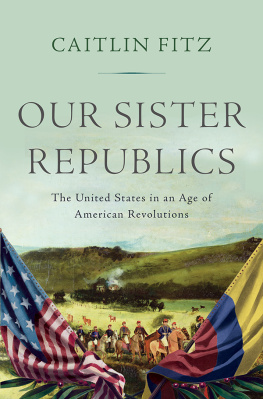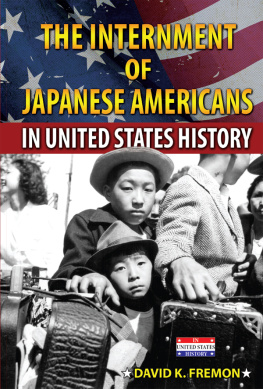References to Internet websites (URLs) were accurate at the time of writing. Neither the author nor New York University Press is responsible for URLs that may have expired or changed since the manuscript was prepared.
For Library of Congress Cataloging-in-Publication data, please contact the Library of Congress.
To the memory of Pete Seeger and Allen Ginsberg, who taught us how to march to the beat of a different drummer
Dissent: The History of an American Idea is my personal take on how dissenters shaped American history. Although the interpretation is mine, many people have contributed to broadening my insights and sharpening my thinking during the research and writing.
My colleagues at Temple University David Farber, Bryant Simon, and Heather Ann Thompson, as well as Krytof Kozk of Charles University in Prague, generously offered their time to read several chapters and offer valuable suggestions that have improved this book. Drew Isenberg, Elizabeth Varon, David Waldstreicher, David Wrobel, and Gregory Urwin read portions of the early chapters when I first set out to write the history of American dissent and made many recommendations that helped guide my way. This book is better because of their insights and criticism. Any errors are solely mine.
My thinking about dissent also benefited from conversations with Richard Immerman, Bob Wintermute, Istvan Varkonyi, and Jim Hilty at Temple; Leopoldo Nuti, Leila Tavi, Azzurra Meringolo, and Renato Moro at the University of Rome (Roma Tre); and Gyorgy Toth and Barbara Capinska at Charles University.
Teaching Dissent in America and leading the weekly teach-ins at Temple University since 2002 has been the most amazing experience of my professional career. Dissent: The History of an American Idea is the product of the course, the teach-ins, and the extraordinary discussions I participated in with my students. I especially want to thank former students Brianne Murphy, Sierra Gladfelter, Sarah Khan, Evan Hoffman, Wafai Dias, Lauren Spahr, Armond James, and Julia Foley, as well as my colleagues Richard Immerman, Vlad Zubok, Beth Bailey, Arthur Schmidt, Lila Corwin Berman, Ken Kusmer, Phil Evanson, Howard Spodek, Mohammad Kiani, Rebecca Alpert, Laura Levitt, Ruth Ost, Terry Halbert, and Teresa Scott Soufas, who have supported and participated in the teach-ins despite efforts to silence us by two political organizations that objected to the teach-ins dissenting point of view. Discussing and analyzing controversial subjects, even in the United States, even in the twenty-first century, evidently has its detractors.
I wish also to thank the Fulbright Specialist Program for the grant to teach my Dissent in America seminar in 2009 at Universit Degli Studi Roma Tre, Scuola Dottorale in Scienze Politiche, in Rome, and the American embassy in Prague for supporting the seminar in 2012 at Univerzita Karlova. Thanks also to Alison Young, Margaret Cronan, and Kerry Sautner at the National Constitution Center for bringing me in for talks and workshops on dissent and the Constitution.
Ashley Dodge and Priscilla McGeehon were the driving forces behind pushing me to write about American dissent when I first began collecting and editing hundreds of documents of American dissenters. I am forever indebted to them for their suggestions and their inspiration. At New York University Press Clara Platter instantly saw the value of this book the first time we spoke about it. I am very grateful to her as well as Constance Grady for their indispensable role in bringing Dissent: The History of an American Idea to fruition.
Many other people had a more personal impact. I want to thank Daniel Wood for teaching me to fall in love with words, Leif Skoogfors for showing me how to look at the world through an artists eyes, Ellen Gibson and Cyndy Jahn for their always-lively opinions that seemed to touch on every subject under the sun, the Friday Night Gang for taking us under their collective wing, Peter Hiler for his unbounded generosity, Millie for being my sister, Cara and Sean for letting me be a part of their lives, my late parents, Ralph Eric Young and Emily Mildred Young, for making sure I did not become part of the military-industrial complex, and my wife, Pat, for her constant energy, compassion, and love.
I first met Pete Seeger in 1969 and over the years between then and 2012 spoke with him on several occasions at the Philadelphia Folk Festival and the Clearwater Hudson River Revival. He was always accessible, always willing to talk about his latest cause (and there were many). He graciously read my Dissent in America reader of dissenting documents and offered suggestions as well as a blurb for the books cover. In February 1980 I spent a day and evening in lively conversation with Allen Ginsberg and continued a correspondence with him for the next eight years. These two men had, before we met and then for a long time thereafter, a profound influence on me and the way I perceive the joys and the sorrows and the complexities of this planet we all share. Dissent: The History of an American Idea is dedicated to their memory and to all the other courageous dissenters who have inspired us to live up to the better angels of our nature.
Dissent and America
If a man does not keep pace with his companions, perhaps it is because he hears a different drummer. Let him step to the music which he hears, however measured or far away.
Henry David Thoreau, Walden Pond, 1854
All we say to America is to be true to what you said on paper.... Somewhere I read [pause] of the freedom of speech. Somewhere I read [pause] of the freedom of press. Somewhere I read [pause] that the greatness of America is the right to protest for right.
Martin Luther King, Jr., Memphis, April 3, 1968
There are many ways to tell the story of the United States, many possible perspectives. This is the story of the U.S. told through a somewhat unlikely assortment of voices. It is the story of religious dissenters seeking refuge in a New World; Native Americans defying the onslaught of European settlement; political revolutionaries launching a government of the people, by the people, for the people; enslaved Africans resisting their oppressors while creating a new culture; immigrants fighting to assimilate into American society; women persevering to gain equality; and minorities demanding their share of the American Dream. It is also the story of a countless number of Americans who prodded, provoked, and pushed the United States to actually be the nation it imagined itself to be. Throughout these stories runs the thread of dissent, protest, conflict, and change.
Dissent: The History of an American Idea is the personal reflection of a historian on the centrality of dissent in American history. Of course dissent in not sui generis an American idea, but Americans have instinctively understood, even if mostly unconsciously, the interrelatedness of dissent and what it means to be an American. Dissent created this nation, and it played, indeed still plays, a fundamental role in fomenting change and pushing the nation in sometimes-unexpected directions. My goal has been to write a narrative history of the United States from the standpoint of those who did not see eye to eye with the powers that be, from the standpoint of those who marched to the beat of a different drummer constantly challenging the government to fulfill the promise laid down in the nations founding documents. There has not been a time in American history when dissenters have not spoken out against the powerful and entrenched interests. At the same time, there were many occasions when dissenters against the dissenters fought ever harder to maintain, or restore, a social order that they feared would vanish if dissenters had their way. And so dissent did not propel the United States on a steady path toward the progress that dissenters sought. It was a rocky road.










